
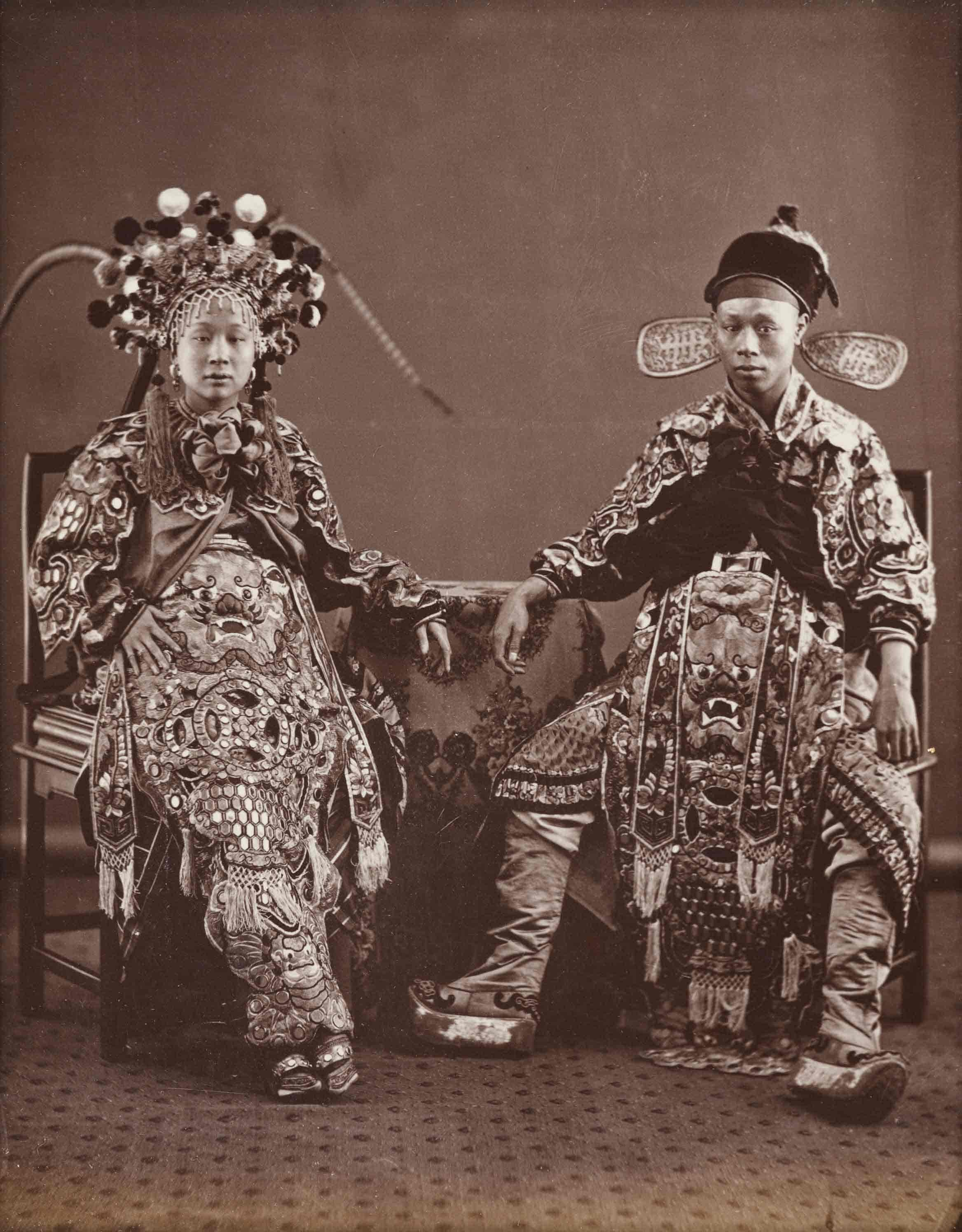
Lai Fong
1870s
Albumen silver print
29 x 21 cm
From the Loewentheil Collection
黎芳
1870年代
蛋白印相
29 x 21 厘米
洛文希尔收藏
This photograph by Lai Fong represents the coming together of two cornerstones of Qing Dynasty art and culture: Lai Fong, China’s greatest photographer, and the Peking Opera. The Peking Opera, also known as Beijing Opera and as Jingju, has been a prestigious Chinese art form for more than two centuries. It combines music, vocal performances, mime, dance, physical stunts, and acrobatics, and features exaggerated movements and facial expressions. The long exposure times required by the wet plate collodion process prevented photographers from capturing performers in action. Instead, many late Qing Dynasty photographs show actors in theatrical poses. Here Lai Fong chose to photograph the actors seated, without their makeup or all the elements of their costumes including flags on their backs. His studio portrait is exceptional for conveying a sense of the performers’ humanity rather than confining them to the characters they portray on stage.
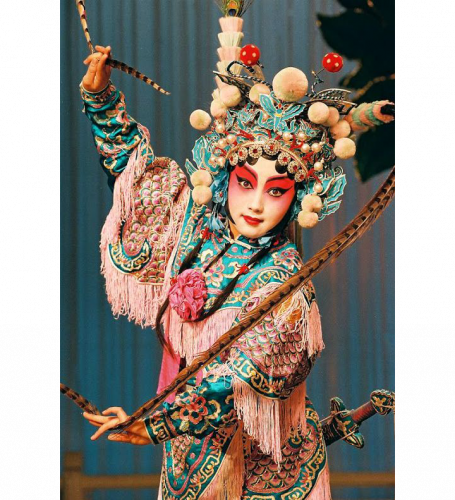
Elaborate Dao Ma Dan costume worn by female characters in the Peking Opera.
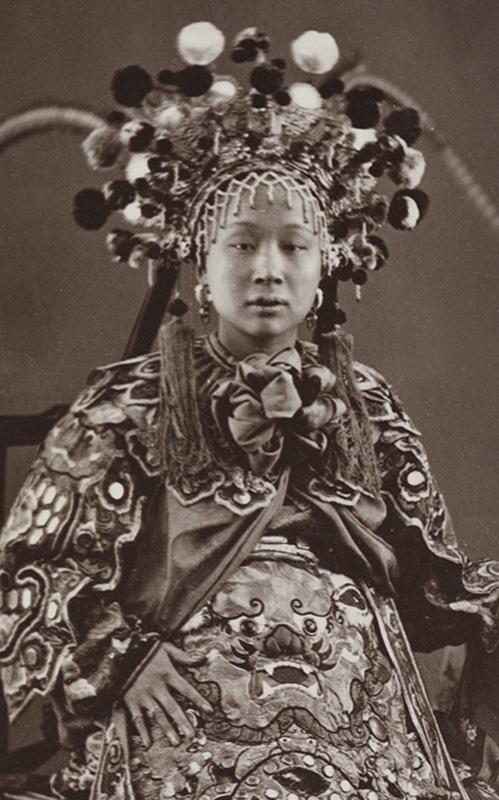
Lai Fong’s dramatic portrait shows two elaborately costumed performers. Due to the light use of props in the Peking Opera, costumes take on great significance. The costumes in this photograph reveal their active roles in the opera – they are warriors dressed in attire attributed to the style of the Ming Dynasty.
Peking Opera costumes distinguish the ranks of the characters being played. The performers in Lai Fong’s photograph wear mang or python robes featuring brilliant colors and rich embroidery including a dragon design. An Emperor’s robe is embellished with a dragon opening its mouth while the pythons on the robes of his ministers and generals have their mouths closed. Typically in Peking Opera, emperors and their families wear yellow robes, and high-ranking officials wear purple.
In this carefully composed photograph, the Peking Opera performers sit in repose as they gaze directly at the camera. Lai Fong chose to depict both performers off stage dressed in part of their costumes but out of character, seated naturally before his camera. Their full costumes would likely include flags worn on their backs and possibly a beard for the male character. Here we see the actress and actor with some of the accouterments of their occupations as performing artists. Through the gaze and expressions of the performers, Lai Fong provides a window into the personalities of the people he photographs. His depiction of the performers is universal and timeless.
Peking Opera in Photographs
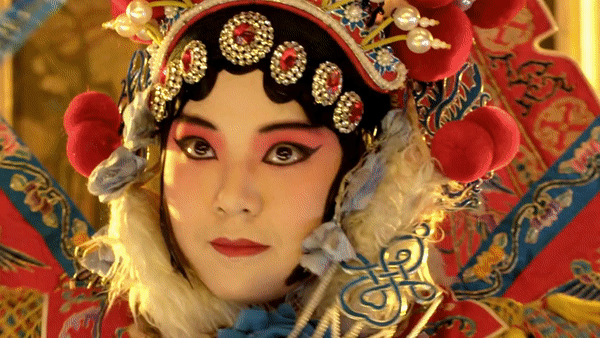
The female character in Lai Fong’s photograph is dressed as the Daomadan, or female warrior. She wears the seven stars diadem with long pheasant plumes and heavy, ornate, armor. A Daomadan plays the roles of heroines in Chinese history. She acts, sings, and performs many complicated movements with her weapons and the long pheasant feathers in her headdress. Restrictions were placed on female performers and audience members until the 1870s when females began taking the stage, sometimes filling male roles.
Contemporary portrayal of the female character in Lai Fong’s 1870’s photograph.
The male character plays the role of a Changkao Wusheng, typically performing scenes from legendary stories of immortals and devils. The highly stylized combat scenes of the Peking Opera often call for a Wusheng’s training in acrobatics and acting. They tumble and twist on stage demonstrating their agility and strength. In military plays, Wusheng performers wield their swords and spears quickly and precisely without touching their opponents.
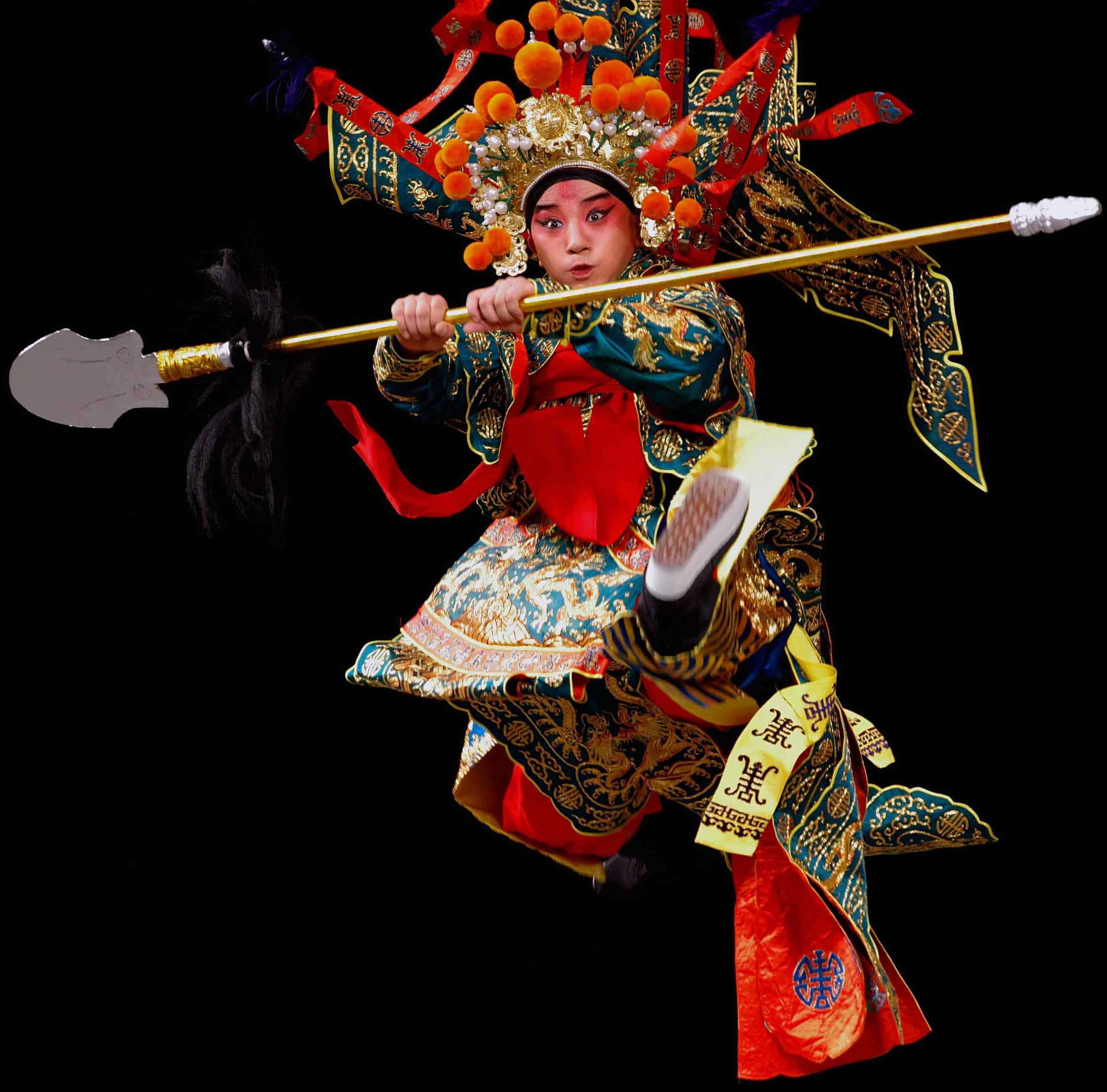
Sheng Costume
For permissions and inquiries please contact:
446 Kent Avenue PH-A Brooklyn, NY 11249 USA